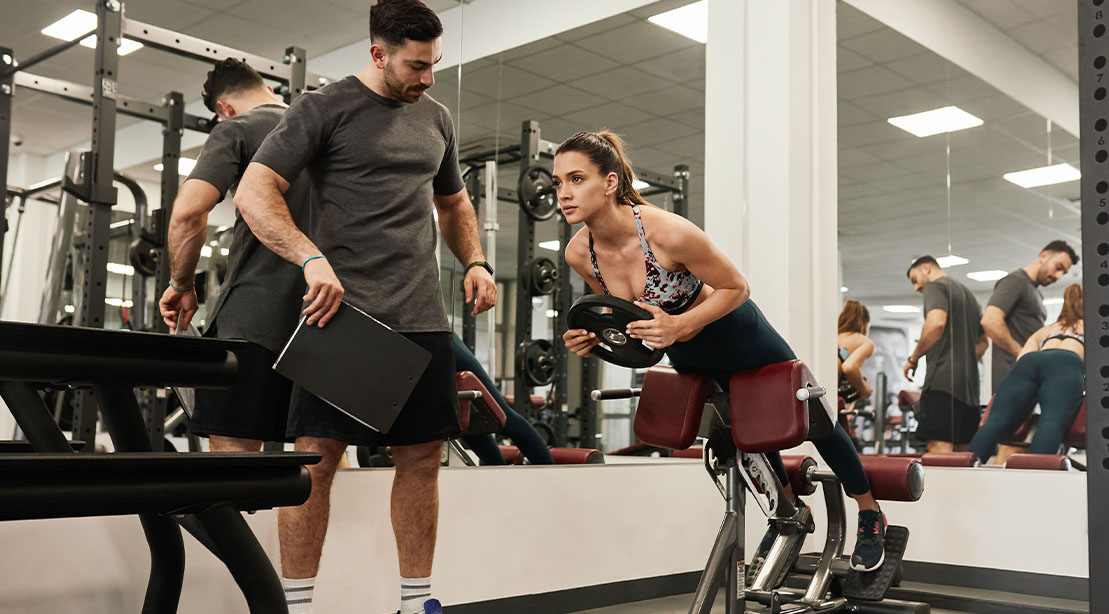There’s a movement term that Tim Anderson of Original Strength came up with: good, better, and best. Even when a movement is performed poorly, it is still “good” because all movement beats sitting on the couch. But the amount of times I’ve seen lifters make back extension mistakes throughout the years puts Tim’s ethos to the test.
The back extension exercise, when performed correctly, targets the lower back, glute, and hamstring muscles through a large range of motion, allowing for greater strength and hypertrophy. And It’s a highly versatile exercise that can be loaded in several ways for added size and strength.
The trouble is this exercise is either neglected for far more TikTok-worthy exercises or just rushed through sloppily. Correct form works “best” with the back extension.
Here we’ll learn how to do this awesome exercise, what is needed, and some common back extension mistakes stopping you from getting the best out of it.
How To Do The Bodyweight Back Extension
- Secure your feet on the back-extension machine with your hips above the padding.
- Cross your arms over your chest.
- Then keep your chest up and shoulders down, and slowly lower your upper body until you feel a great stretch in your hamstrings.
- Be conscious of not rounding your low back.
- Raise using your glutes and lower back until your body aligns with your legs.
- Reset and repeat.
What’s Needed for Good Form
There’s not a lot to the back extension, and after watching a YouTube video or two, you, too, can rip some good reps on the Back Extension machine. It is an exercise that is easily progressed, regressed, and benefits all lifters. Because, you cannot have enough lower back and glute strength.
- Setup is vital for this exercise; this simple step trips some lifters up. Ensure the heels are secured and your pelvis IS NOT on the pad.
- Neutral spine throughout the range of motion because if you’re flexing and extending your lower back, you‘re not working the intended muscles.
- Some thoracic (upper back) mobility is needed to get your chest up and shoulders down to help put you in a good lifting posture.
- Go slow, not fast. Some exercises are designed to be performed quickly, but the Back Extension exercise is not one of them. You want to feel the muscles working.
4 Common Back Extension Mistakes
Although it is a simple move, mistakes can still be made that take away from the effectiveness of this exercise. Here are four things NOT to do when performing this excellent exercise for the lower back and glutes.
Artificial Range Of Motion
With exercises that target the lower back and glutes, there is a temptation to hyperextend the lower back to get more range of motion. This is a big no-no because if you keep doing it, the lower back will let you know in certain terms that this is not working correctly. When you feel this more in the lower back than the glutes, it’s a sign you’re taking it too far.
Fix it: Finish the range of motion with the glutes by giving them a good squeeze by the time your approach lockout. This will ensure you’re not taking it too far.
Too Much Momentum
The Back extension is not a 1RM exercise but adds muscle-building volume to the glutes and lower back. It is better to perform with control and feel your glutes and hamstrings rather than using momentum. Better here to focus on tension and not speed.
Fix it: It’s easy to say to slow down, which you should, but performing the Back extension with tempo, say three seconds eccentric and concentric with a three-second glute squeeze (3033 tempo), will do the trick.

Knowing The Difference Between The Hips And Back
Like the bird dog exercise, some lifters have difficulty telling the difference between hip and low back extension. Knowing how to hinge at the hip joint rather than the lumbar spine is vital for performing this exercise well.
Fix it: Performing it with tempo is a great starting point, and feeling the stretch in your hamstrings, not your back, is critical here. Knowing how to hip hinge is essential, too, and going back to the basics may be needed if you have trouble understanding the difference between your hips and back.
Proper Setup
The Back extension is easier to do with your hips resting on the pad but less effective. The movement for this exercise happens at the hip joint, and when you lock the hips in, the muscle-building benefits for the lower back and glutes go bye-bye.
Fix it: Adjust the padding to rest on your quads, not your pelvis.
